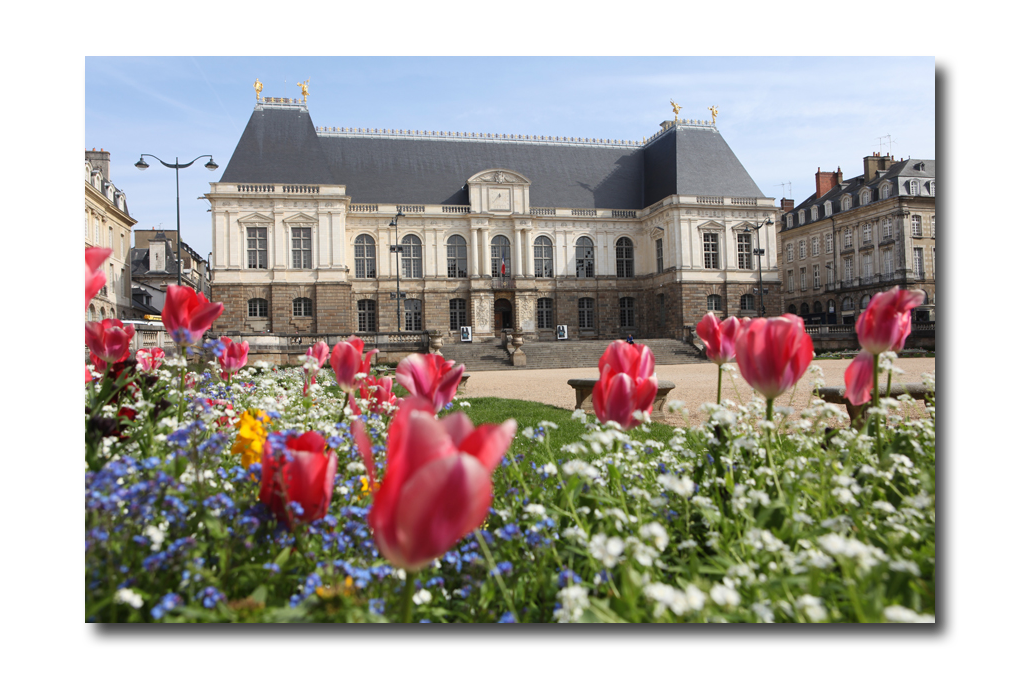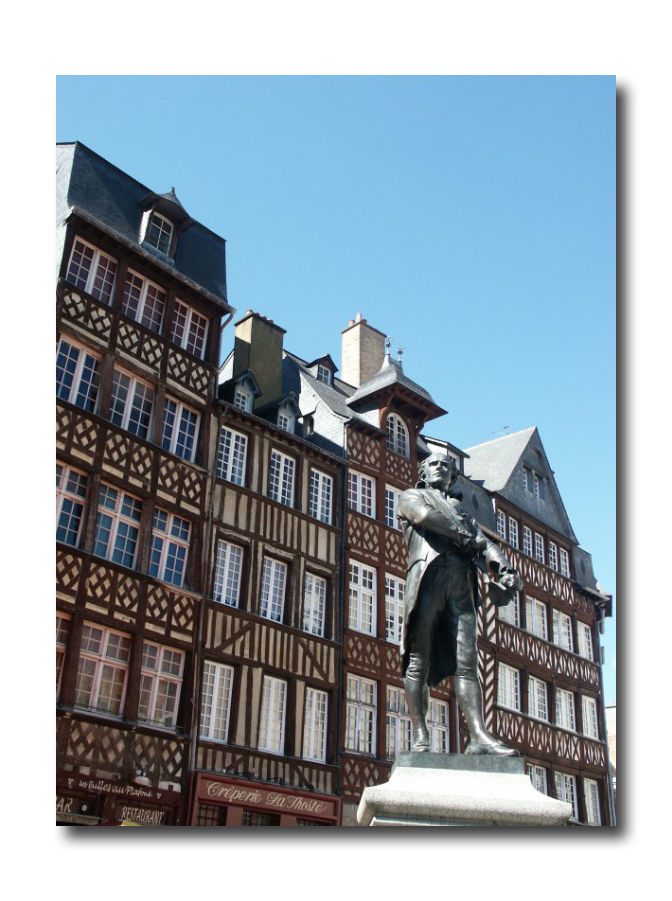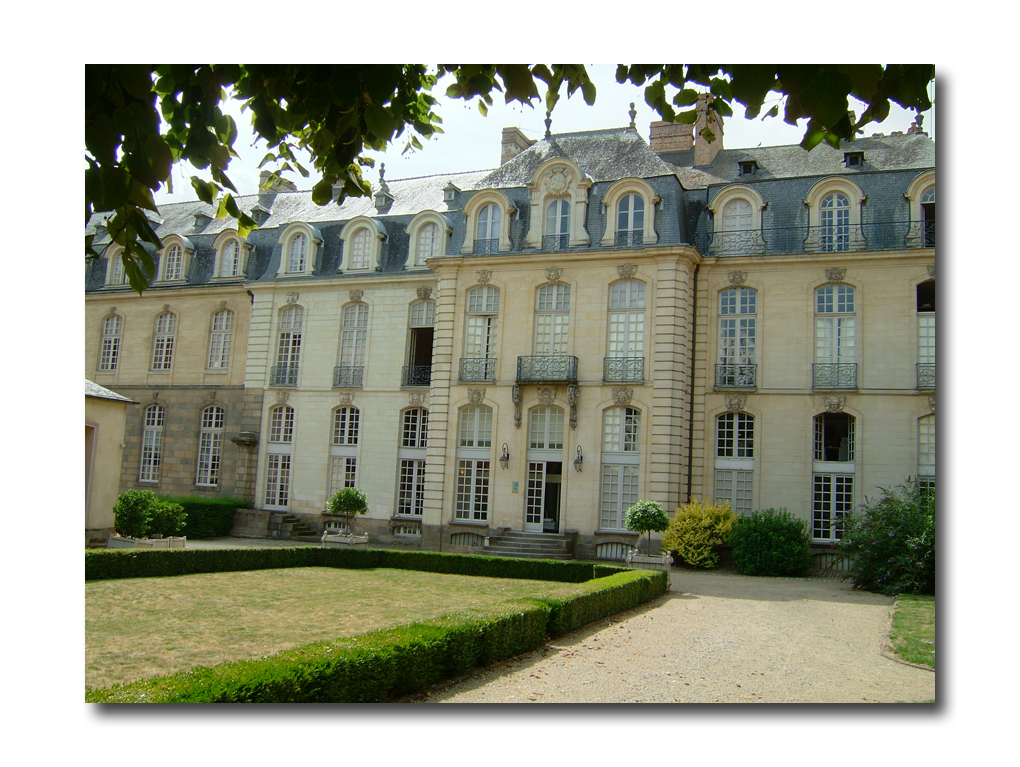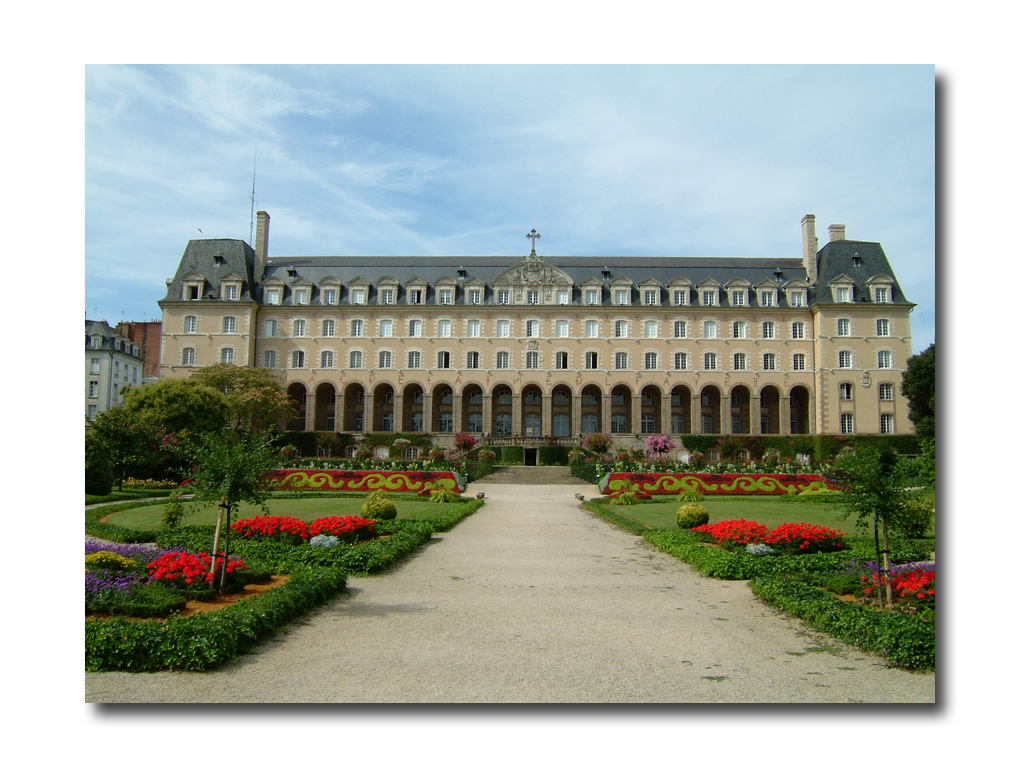Pictures courtesy of Rennes' Tourist Office
Le Parlement de Bretagne, Place du Parlement
One of the most visited monuments in Rennes, and one of Brittany’s finest buildings, the Parliament building, which doubled as law courts from the beginning, was constructed to house the Breton Parliament following the region’s reunification with France. It stands in Parliament square – drawn by Louis XV’s architect, Jacques Gabriel – lined by 17th and 18th town mansions. Built from 1618-55 after the plans of the architect of the Palais du Luxembourg in Paris, Salomon de Brosse, the Parliament played a legislative and political role, with the responsability to record royal edicts and letters, but was also the supreme court of the 2 300 Breton tribunals. In the wake of the French Revolution, the Parliament lost its political importance while remaining a court of justice – these days it houses the Court of Appeal.
The Main Chamber (Grand’ Chambre) stands out among a series of very finely decorated rooms (the investigation room, the criminal court room, etc.), and it truly is the jewel of the interior décor, with sumptuous French style ceilings, allegorical paintings or sculpted gilded wood panelling down to the one Gobelins tapestry still visible today. Although rooted in Breton history, the Parliament is a remarkable testimony of the grand royal and red-walled Parisian décor of the 17th century, and a unique example of the pictorial art of the time. It was wonderfully restored after a devastating fire in 1994, and since reopening in 1999, it has regularly housed chamber music concerts (in the Grand’Chambre), temporary exhibitions, or the finale of the pleading contest of Rennes University Law School.
Visits can be booked online or by calling the Tourist Office at this number : 02 99 67 11 66. The visit lasts 1h30. Meeting place : the Tourist Office, Monday to Friday, at 11 am and 2:15 pm (or at a different time, if need be). Saturdays at 3 pm and 3:30 pm; Sundays at 2:30 and 3 pm.
http://www.tourisme-rennes.com/reservation-visites-activites-guides-spectacles.aspx

Parlement de Bretagne © Michel Ogier
Place du Champ Jacquet
The rue du Champ Jacquet opens up on a triangular-shaped square, of the same name, with a striking line-up of tall 17th century half-timbered houses, some of which stand a little askew. Close by, Sainte-Anne square is also lined with interesting 16th century half-timbered houses, and so are Saint-Michel and Pont-aux-Foulons streets that both lead to Sainte-Anne square. They are part of the old town which survived the massive 1720 fire – that destroyed 33 streets – and form a maze of quaint streets lined by several hundred 15th through 17th century painted timber-framed medieval houses. To make the most of their overhanging storeys and sculptured facades, with fine carvings over doorways, you may want to stroll around St-Peter’s Cathedral and to the south of Parliament square, around the Flamboyant St-Germain church or along Saint-George street. These colourful façades have been visible in their near original state since the 1970s, when the plaster that had been covering them since the middle of the 18th century was removed.
 Place du champ Jacquet © José Mouret
Place du champ Jacquet © José Mouret
Hôtel de Blossac, 6, rue du Chapitre
A fine example of civilian architecture, the Hôtel de Blossac is an 18th century stately home in the historic center of Rennes. The granite and limestone building, which has two main wings, was built in 1728 after the 1720 Rennes city fire. The drawings point to Jacques Gabriel (1698-1782) as the architect ; he was the premier architect of France under Louis XV and promoted the transition from Roccoco to Neoclassicism (think his Petit Trianon at Versailles).
The Hôtel de Blossac boasts a unique classical architecture in Brittany, enhanced by its size, the assembling of architectural buildings from different time periods (the older is a Renaissance house dating back to 1624) and a fine staircase, on the left on entering, mentioned by Gabriel as a blueprint for that of Rennes’ Town Hall. The property of the La Bourdonnaye family, earls of Blossac, for nearly two centuries, the Hôtel was leased by the city as the residence of the commander-in-chief of the province of Brittany, with a pomp reminiscent of the royal court in Versailles. The commander-on-chief would have been the president of the Parliament of Brittany that served as court of justice, which may account for the statue of Themis half-way up the stairs. At the French Revolution, the building was divided into apartments.
Listed as a historic monument in 1947, it underwent a complete exterior and interior restoration that lasted over three decades, while the apartments were converted into offices. A state-property since 1982, it has been housing the Regional Cultural Affairs Directorate (DRAC) in Brittany, and the Ille-et-Vilaine agency for the preservation of architecture and historical heritage.
DRAC - Opening hours : Monday to Friday : 9 :00 pm to 12 :00 pm – 2 :00 pm to 5 :00 pm
Tel : 02 99 29 67 67
Hotel de Blossac © José Mouret
Palais St-Georges, 2, rue Gambetta
With your back to the train station, closing the perspective at the far end of Janvier avenue stands Saint George's palace, built in 1670 to replace a much older abbey of Benedictine nuns that was built on the same site. Its construction was presided over by its 38th abbess, Magdeleine de la Fayette, during the Counter-Reformation’s religious revival that followed the Council of Trent. Her name is featured in the form of iron bars shaped as letters, bolted to the façade. Saint George's Palace remained in use as a Benedictine abbey until 1792, when it was used as barracks in the aftermath of the French Revolution. Saint George's swimming-pool was built in 1925 on the site of the abbey church, destroyed around 1820.
The palace has been on the list of historical monuments since 1930 and now houses administrative services. It is closed to the public, unlike the 10-ha Thabor park whose south entrance is located on Martenot street, just steps north of Saint George's Palace. Designed at the end of the 18th century, Thabor park contains French formal gardens, a large rose garden, a botanic garden, remarkable trees, an aviary, a band stand, a café, as well as comfortable chairs in the center next to the orangery.
Palais St-Georges © José Mouret
Sources :
www.culturecommunication.gouv.fr/Regions/DRAC-Bretagne/La-DRAC/L-Hotel-de-Blossac,
http://fr.dbpedia.org/page/Hôtel_de_Blossac
www.tourisme-rennes.com/en/parlement-brittany.aspx
varrtravel.wordpress.com/2013/07/15/rennes-half-timbered-homes-a-throwback-to-medieval-france-2/
http://www.condate.rennes.fr/pano.php?doc=61
http://varrtravel.wordpress.com/2013/07/15/rennes-half-timbered-homes-a-throwback-to-medieval-france-2/
http://www.shutterstock.com/fr/pic-4859503/
http://fr.topic-topos.com/ancienne-abbaye-saint-georges-rennes
Brittany - Tourist Guide, Clermont-Ferrand : Michelin, 1983, pp. 155-159.